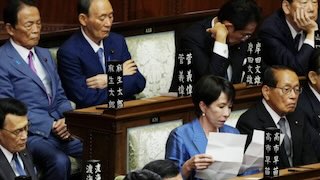Aug 11 (Nikkei) - As Japan faces a myriad of challenges from the coronavirus to an increasingly complex security landscape, Prime Minister Fumio Kishida has packed his cabinet with seasoned lawmakers who he hopes can tackle them head-on.
Kishida kept five out of 19 ministerial-level officials in a reshuffle on Wednesday, while granting another five posts to those who previously served in the cabinet.
Energy supply tops the agenda. "We'll thoroughly assess our options including the use of nuclear power," Kishida told reporters Wednesday, referring to his plans of restarting reactors to deal with a looming power crunch this winter.
Kishida chose Yasutoshi Nishimura as the new economy, trade and industry minister, who will be responsible for steering energy policy. Nishimura began his career at the ministry, and has served as minister in charge of economic and fiscal policy.
"The broad plan is to restart nuclear reactors that meet safety requirements," Nishimura said Wednesday.
Generally, a reserve electricity generating capacity of 3% is required to ensure a stable supply. But areas served by Tokyo Electric Power Co. Holdings and Tohoku Electric Power, which includes the greater capital region, are expected to have a 1.5% buffer in January. Those served by six other major utilities, including the cities of Nagoya, Kyoto and Osaka, are expected to have a buffer of 1.9%. The government aims to have nine nuclear reactors running this winter and to restart fossil fuel power plants to meet demand.
Japan currently has no plans to build new nuclear reactors. But a council under the Ministry of Economy, Trade and Industry has drafted a road map for developing fast reactors and other cutting-edge nuclear power technology. The government faces a difficult decision between public opinion, which turned against nuclear power after the 2011 Fukushima Daiichi disaster, and bolstering its electricity supply.
The supply of liquefied natural gas is a concern as well. Russia is moving to take control of the Sakhalin-2 oil and gas project since invading Ukraine, raising concern that LNG shipments to Japan could be severed. ...continue reading















